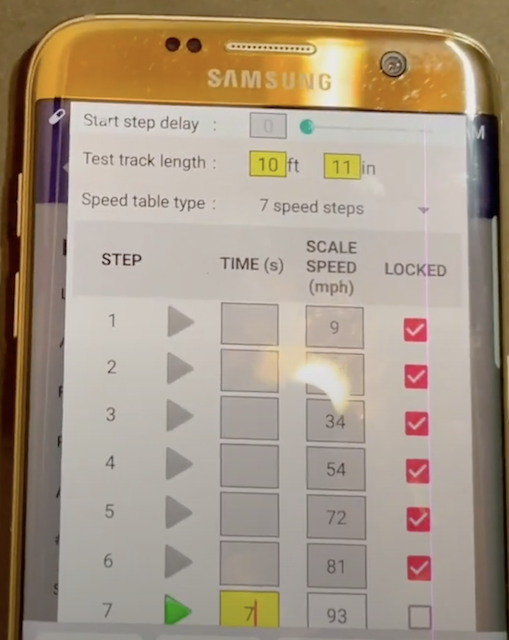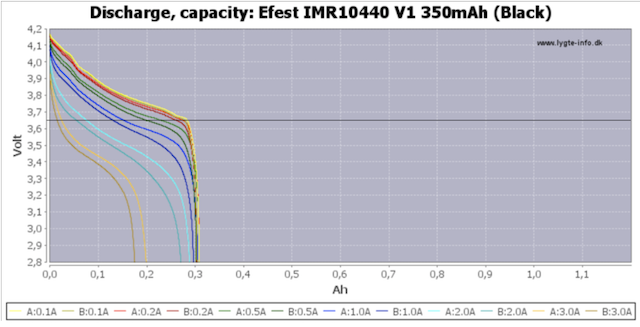Using two AAA side-by-side battery boxes, that hold two batteries each, wired in series, made it easy to apply a beginning resting voltage of a bit over 16V. LocoFi" noted using a 16.5V, 4.5A laptop power supply on their Facebook Page. I therefore decided that something in the 16V range would be okay. I was wrong! That can easily be seen with the Derived Run Time information for the Conrail conversion using a 4S IMR 10440 resultant battery. First Derived Run Time Test with a 4S IMR 10440 Resultant Battery - (The method describe here is no longer used.)
I knew that the CSX, with its 3S 300mAh Li-Po, had provided a significantly longer Derived Run Time, so I ran the test for the Conrail again.
The Derived Run Time is then, 20 minutes but... That is when I had an "A HA" moment! The maximum speed for a full-scale EMD GP15-1 is 65 mph. This locomotive was configure in the YouTube Video "Making and Using a Portable Dead Rail Demonstration HO Layout - Part 3" 
Screen capture from the video The last three configuration voltages produced mph well above what is required for prototypical operation for this locomotive; 72 mph, 81 mph and 93 mph. I had looked up replacement can motors for HO locomotives and noticed that, when noted, the maximum voltage was noted as 12V. It is not unusual in electrically powered model airplanes to run motors above their noted maximum voltage, as it is the amp draw and total watts in that really matters the most, but that 12V should have given me a clue. A motor's stated voltage is really referencing the windings. When watching S-Cab system videos, I had noted that a single Li-Po battery was used along with a step-up voltage converter to raise the voltage to 12V. The BlueRail videos showed the use of 3S Li-Pos, which are also in the 12V range when fully charged. With all that information already available to me, I really should not have tried using four 10440 size Lithium-ion, nominal 3.7V with a charge termination voltage of 4.2V, batteries in series, but it was that mistake that clearly illustrates why going to a 4S Lithium-ion, nominal 3.7V with a charge termination voltage of 4.2V, resultant battery for battery power is not a good idea in HO scale in this instance. In the EEVblog #140 - Battery Capacity Tutorial, Dave Jones notes, "... generally speaking it's actually pretty darn hard to get a really accurate estimate of the battery life for your product based on just characteristic curves in the data sheet. Really, if you are serious about it, there is no substitute for actually measuring the actual battery life in your actual product." Even though the data gathered at a constant discharge rate is not all that helpful, as the current that a locomotive motor is pulling at varying speeds changes, it can illustrate a point that I'd previously noted. Once the voltage discharge "knees over" there is very little "usable capacity" left in the battery.
I copied the Discharge capacity graph from the noted test Webpage and added a line at 3.65V. Why 3.65V? The battery is under load during the test. About 3 hours after the test, the battery should reach a stabilized resting voltage of about 3.7V. Note that with a constant load, at even the low 0.1 amp and 0.2 amp load, there is almost no capacity remaining after the discharge knee. Even at a constant current draw of 0.1A, the capacity is only close to 300mAh, not 350mAh, as stated on the battery. With 3.5V under load now used as the cut off voltage, it is easy to see, on the graph, that there is very little capacity left in the battery. The Derived Run Time Procedure test noted in this section is no longer used. The actual run time procedure is now noted in the section titled, "The Procedure to Determine the Actual Run Time Using Three IMR or INR 10440 Size Batteries ". |
